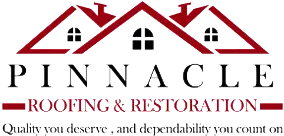The Importance of Choosing the Right Roofing Materials for Your Building
When it comes to constructing or renovating a building, one of the most critical decisions you’ll have to make is the type of roofing materials to use. Your choice of roofing materials can impact the longevity, safety, and overall aesthetic appeal of your building. With so many options available in the market, it can be overwhelming to determine which materials will best suit your needs.
Types of Roofing Materials for Commercial Buildings
1. Metal Roofing
Metal roofing has gained popularity over the years due to its durability and longevity. It can withstand extreme weather conditions, making it an ideal choice for commercial buildings. Metal roofs are also energy-efficient and can help reduce cooling costs. Furthermore, they require minimal maintenance and can be installed quickly, saving you both time and money.
2. Built-Up Roofing (BUR)
Built-Up Roofing or BUR consists of multiple layers of asphalt and reinforcing fabrics. This type of roofing is known for its strength and ability to resist heavy foot traffic. BUR also provides excellent insulation and is fire-resistant, making it a preferred choice for commercial buildings. Additionally, BUR can be customized to suit various architectural styles, providing versatility in design.
3. Thermoplastic Olefin (TPO)
TPO roofing is a cost-effective option for commercial buildings. It is made of a single-ply membrane that offers excellent durability and resistance to UV rays. TPO roofs can also withstand high winds and are resistant to punctures. Moreover, TPO roofing is energy-efficient and can help reduce heating and cooling costs.
4. Green Roofing
Green roofing is an eco-friendly option that involves the use of vegetation and living plants as roofing materials. It offers numerous benefits, including improved insulation, reduced stormwater runoff, and enhanced air quality. Green roofs also provide a visually appealing and natural habitat for birds and insects. They can be an attractive feature for commercial buildings looking to incorporate sustainability into their design.
Types of Roofing Materials for Residential Buildings
1. Asphalt Shingles
Asphalt shingles are the most popular and cost-effective roofing option for residential buildings. They come in a wide variety of styles and colors, allowing homeowners to choose the one that best suits their preferences. Asphalt shingles are lightweight, durable, and easy to install. They also provide excellent protection against harsh weather conditions.
2. Wood Shakes
Wood shakes offer a natural and timeless beauty to residential buildings. They are typically made from cedar or redwood and can provide exceptional insulation. Wood shakes require regular maintenance and can be more susceptible to fire, which is why some homeowners may opt for alternative materials. However, with proper care and treatment, wood shakes can last for many years and add a rustic charm to your home.
3. Clay Tiles
Clay tiles are known for their durability, aesthetic appeal, and ability to withstand extreme weather conditions. They are available in various shapes, sizes, and colors, allowing homeowners to create a unique and eye-catching roof design. Clay tiles provide excellent insulation and can help regulate indoor temperatures. However, they are heavier than other roofing materials, requiring proper structural support during installation.
4. Synthetic Roofing Materials
Synthetic roofing materials, such as synthetic slate or rubber, offer the look of natural materials with added durability and affordability. They are lightweight, low maintenance, and resistant to impact and fire. Synthetic roofing materials can mimic the appearance of traditional roofing options while providing superior performance and longevity.
Conclusion
Choosing the right roofing materials for your commercial or residential building is crucial for its longevity, safety, and overall appeal. Consider factors such as durability, energy-efficiency, aesthetic appeal, and maintenance requirements when making your decision. Whether you opt for metal roofing, asphalt shingles, or green roofing, ensure that it aligns with your building’s specific needs and design preferences. By investing in high-quality roofing materials, you can protect your investment and enjoy a durable roof for years to come.







